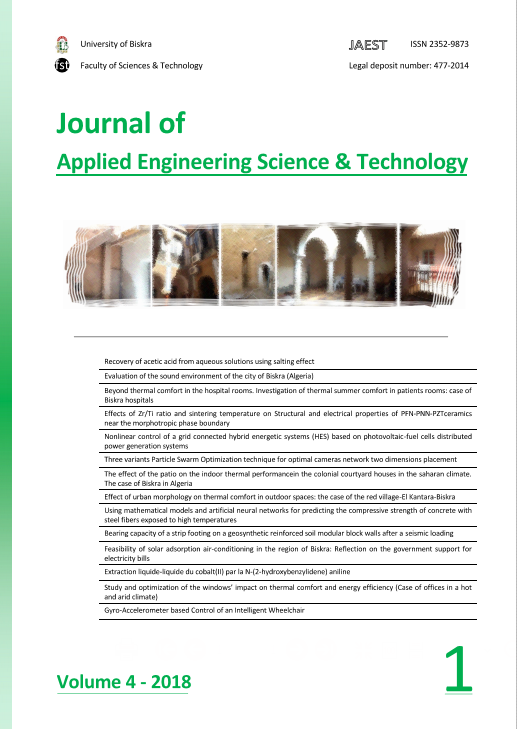Three variants Particle Swarm Optimization technique for optimal cameras network two dimensions placement
DOI:
https://doi.org/10.69717/jaest.v4.i1.56Keywords:
Standard Particle Swarm Optimization, Weight Particle Swarm Optimization, Canonical Particle Swarm Optimization, Motion Capture, Optimal two-dimensional placementAbstract
This paper addresses the problem of optimal placement in two-dimensions of thecameras network for the motion capture (MoCap) system. In fact, the MoCap system is a three-dimensional representation environment used mainly to reconstruct a real motion by using anumber of fixed cameras (in position and pose). The main objective is to find the optimalplacement of all cameras in a minimal time under a major constraint in order to capture eachreflector that must be seen by at least three cameras in the same frame in a sequence of a randommotion. The two-dimensional representation is only used to solve the problem of reflectorrecovery. The choice of two-dimensional representation is to reduce the resolution of a three-dimensional recovery problem to a simple two-dimensional recovery, especially if all the camerashave the same height. With this strategy, the placement of cameras network is not treated as animage processing problem. The use of three variants optimization techniques by Particle SwarmOptimization (Standard Particle Swarm Optimization, Weight Particle Swarm Optimization andCanonical Particle Swarm Optimization), allowed us to solve the problem of cameras networkplacement in a minimal amount of time. The overall recovery objective has been achieved despitethe complexity imposed in the third scenario by the Canonical Particle Swarm Optimization variant.
Downloads
Downloads
Published
Issue
Section
License

This work is licensed under a Creative Commons Attribution-NonCommercial 4.0 International License.













